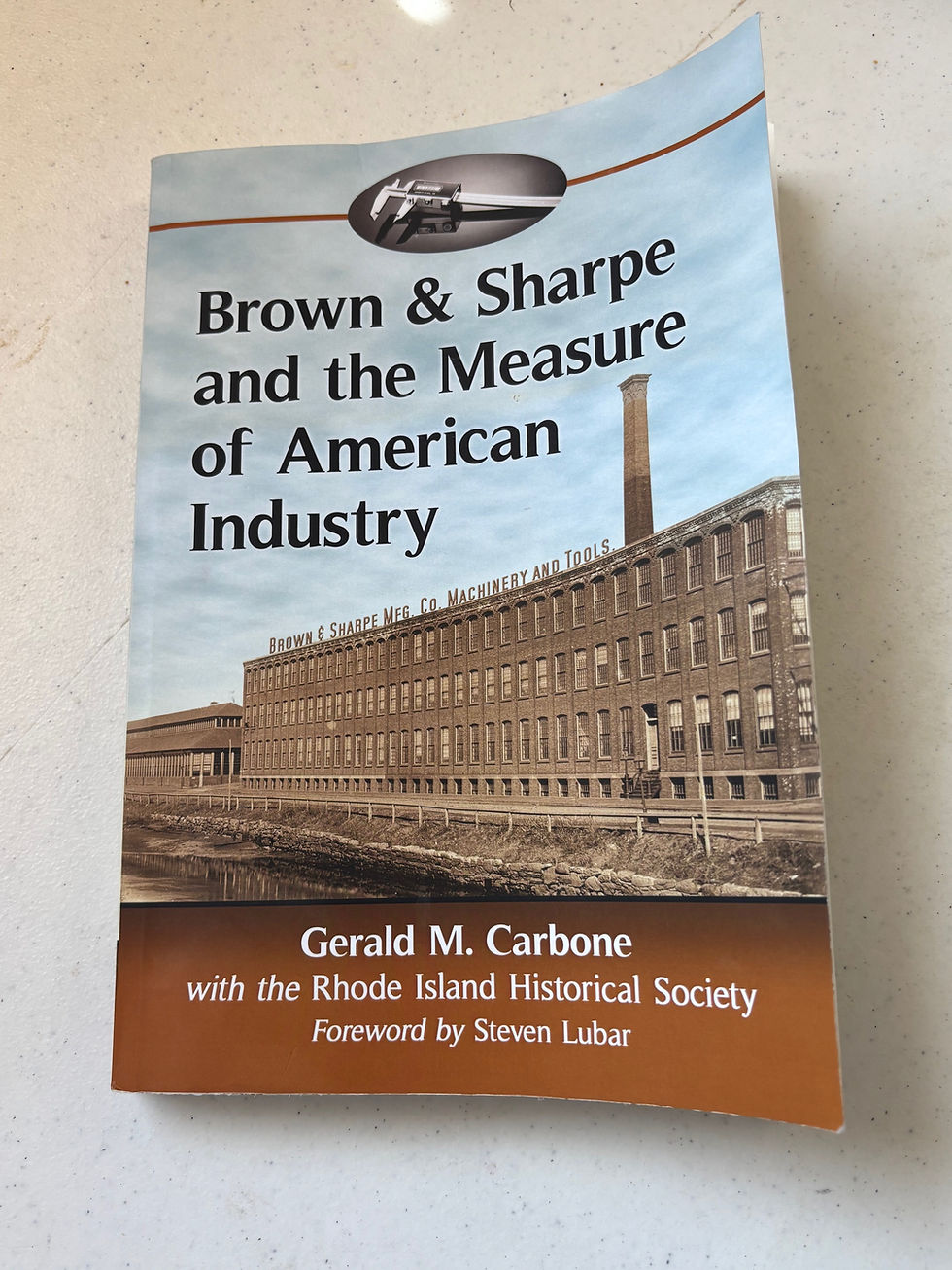Manufacture of Tacks, Brads & Sprigs
- marcsitkin
- Jul 2, 2020
- 3 min read
Updated: May 14, 2023

Reed's "one operation" nail machine.
From The Chronicle, Volume 1, No. 3 March 1934
By Earle T. Goodnow
The following information was secured from a letter of May 30th, 1832, written at Abington, Mass., by Benj. Hobart to the Secretary of State of the United States.
The making of tacks by hand commenced in the town of Abington about 1770. The first attempt was to cut up. old hoops into points, by a very imperfect kind of shears, and take them up, one by one, and place them in a common vise and screw up and unscrew for the purpose of heading each tack with a hammer. From this process they were called cut tacks.
This mode was much improved by the use of movable dies about the year 1800. These dies were placed in an iron frame in the shape of an ox-bow; the two ends in which were placed the dies, being brought together by a lever pressed by the foot. In the first process a man might make 1,000 tacks per day, in the latter 8,000 per day. This was a great improvement and the inventor, Mr. Ezekiel Reed, was entitled to a patent, but he could not conceal the simple operation and it soon came into common use.
(While this machine might in one sense be considered as heralding the passing of the hand mode, do not overlook the fact that to make one tack a kick of the foot was necessary and, after all, by this process the operator was only able to produce 8,000 tacks per day and incidentally a day was fifteen hours in the summer and ten hours in the winter.)
With these machines or tack tools as they were called, thus improved, from three to four hundred men and boys were employed in making tacks in the town of Abington and vicinity from about 1800 to 1816. For about thirty years previous to 1800, the business progressed from a small beginning to the employment of the number of hands above mentioned.
In 1815-16 a machine was invented by Mr. Jesse Reed, of Hanover, son of the aforementioned Ezekiel Reed, to make tacks in one operation. Mr. Melvil Otis, of Bridgewater, claimed and received a considerable share in the invention. Improvements on the machine were soon made by Thomas Blanchard, of Springfield, and Samuel Rogers, of East Bridgewater. For the exclusive patent rights on these improved machines, Elihu Hobart and the writer of the letter, Benjamin Hobart, paid $20,000; they also expended about $10,000 for building machines and fixtures and putting them into operation by water power; these new machines produced from 100,000 to 150,000 tacks each per day, and one, for some reason better than the rest, produced 250,000 in one day.
In conclusion, a few figures on the quantity and cost of production may be of interest. They are as follows – for one year's production – to manufacture 300 tons required about $35,000 to be invested in land, water privileges, buildings, fixtures and machinery, with tools, wagons and horses, or oxen, for transportation purposes, and exclusive of patent rights, – say for these $35,000.
300 tons of iron……$30,000 Rolling same into plates……$9,000 Transportation 25 miles……$2,000 To 100 workmen for making 1,200,000 m of tacks, or 1,2000,000,000 in month……$15,000 Papering and boxing……$1,000 5,500 wooden boxes……$1,000 200 reams of house sheathing paper……$700 Wharfage on 5,000 boxes shipped……$100 Freight……$750 Iron, steel, files, band leather, oil and twine……$750 Agents to superintend……$1,500 Commissions on sales……$1,500 Insurance……$500 Coal, wood, etc., etc.……$1,500 Total: $100,300
These figures were for two shops. There were in the United States about this time a number of shops which used about 2,000 tons of iron and paid out a total of about $200,000 in labor.
In the manufacture of the following articles, tacks were extensively used: hand-cards, trunks, saddles, carriages, bellows, cigar and other boxes, brooms, brushes, sieves, shoes, posting advertisements, etc., etc.
Editor's note: The earliest issues of The Chronicle did not include images; the patent drawing used above was found online in a paper by Krysta Ryzewski and Robert Gordon, "Historical nail-making techniques revealed in metal structure," (Historical Metallurgy, 42, No. 1, 2008). In this paper is a description of the use of the Reed machine, from an 1819 patent infringement case. https://inspectapedia.com/interiors/Historical-nail-making-techniques-Ryzewski.pdf




Comments